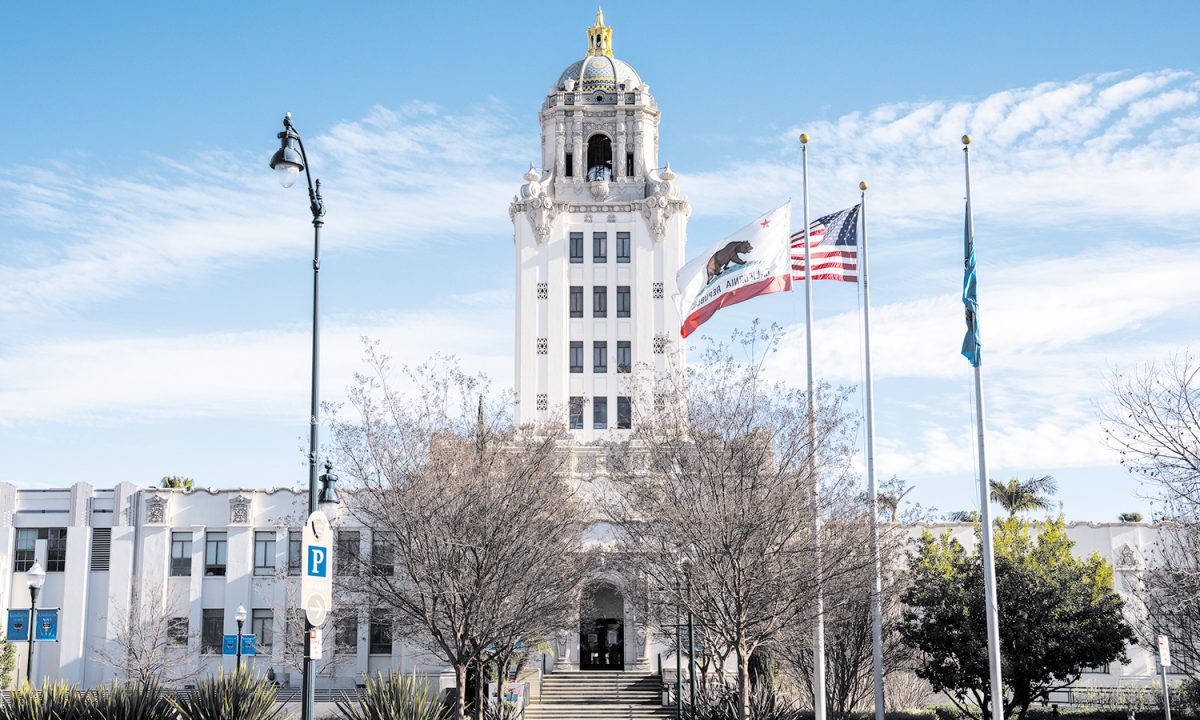The Beverly Hills City Council is looking forward to launching the city’s new Neighborhood Traffic Calming Program, which will allow residents to help shape the speed control and traffic safety measures implemented on their local streets.
Members of the council discussed the program during a Nov. 7 study session and provided their feedback for changes they would like to see before it comes back to the council for final approval in an upcoming meeting.
In their regular Nov. 7 meeting, the council also approved a new street closure on S. Canon Drive and a one-year extension of the N. Canon Drive closure to enable construction of the Metro Purple Line.
The proposed Neighborhood Traffic Calming Program contains a toolbox of 17 different vehicle speed controlling strategies that residents can ask the city to implement. The program also outlines a procedure for how residents can request traffic calming, the requirements for approving their requested tools and methods for evaluating the intervention.
The tools are divided into three tiers: Tier 1, non-physical devices; Tier 2, speed control devices; and Tier 3, volume control devices, meaning controlling the number of cars on a street section.
Tier 1 tools include strategies such as flashing signs that alert drivers to their speed, lane narrowing to encourage slower travel, and BHPD temporary speed enforcement stops. These tools can be approved by city staff without the need for council or commission input.
Tier 2 strategies slow vehicle speeds through interventions such as speed humps, traffic circles and traffic medians. The implementation of these tools requires approval from the Traffic and Parking Commission.
Tier 3 strategies create new traffic control measures that limit the number of vehicles traveling on a street section at a given time. They include practices such as restricting turns during certain hours, partial or full street closures, and barriers that limit turns or entering streets from certain directions.
As these tools will have the most significant impact on traffic, they will require City Council approval prior to implementation.
Council was generally supportive of the plan, but some members expressed interest in having a greater say over approval of Tier 2 measures.
“There are certain aspects of the three tiers that I’m very much in favor of and there’s other ones that I am concerned about that seem pretty severe and would make a significant impact in the community,” said Councilmember Sharona Nazarian. “I would like to maybe have a way that the council can also review those; for example, the tier two traffic circles, median islands, midblock curb extensions, offset curb extensions.”
Councilmember Lili Bosse agreed with Nazarian and said that requiring council review of certain Tier 2 tools, would also provide another opportunity for residents to weigh in.
“I think when we are talking about traffic circles, median islands, etc., I think it’s really worth having a further public conversation beyond the Traffic and Parking Commission,” she said. “Because we’re talking about residential streets, I really feel that we need to allow for more public conversation.”
Under the program, residents who would like traffic calming measures will submit an initiation form on the city’s website. Then staff will collect data on car volumes and speed at the area in question to determine if calming measures are warranted.
If the initiative moves ahead, the city will hold meetings with nearby residents to gather their input on requested tools and distribute a survey to see if the overall neighborhood supports traffic calming.
If neighbors are supportive, the project advances to the approval stage, which depends on the tier of tools requested. If approved, staff will install the tools and collect data to evaluate whether they are effective or require adaptation.
After a robust discussion on the merits of the new traffic calming program, council returned to the subject of traffic control later that evening during their regular council meeting.
In this meeting, council approved a six-month extension of the street closure at N. Canon Drive at Wilshire Boulevard for the construction of the Metro Purple Line. Council also granted Metro’s request to fully close S. Canon Drive at Wilshire Boulevard for approximately three months.
Council agreed that the road closures were the appropriate measure to ensure safety around construction zones, mitigate further traffic impacts, and protect residents and businesses from construction noise and debris.
At the same time, they expressed frustration with the speed at which the Metro construction is moving forward and the need to continue extending and adding street closures.






